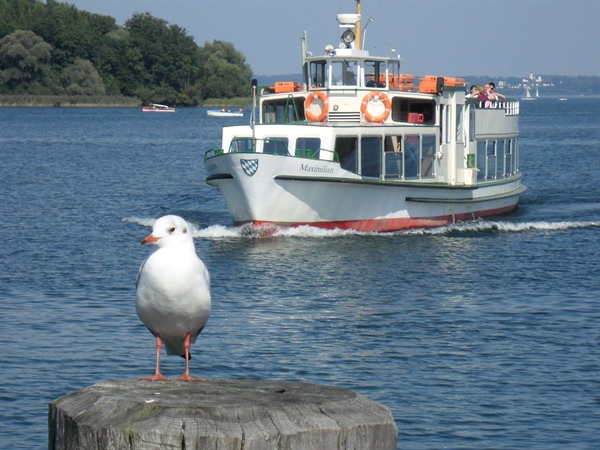I’ve been thinking about how to present the topic of eligibility for accreditation. The answer came when my husband and I made a recent day-trip that included two round-trip ferry rides. For ferries and for accreditation the determinants of success are quality and competence, not size or longevity.
Let me tell you a bit more about our day trip to Smith Island, an isolated archipelago of tiny islands in the Chesapeake Bay, 12 miles from Maryland’s lower Eastern Shore.
Our first ferry ride of the day was a brief five-minute trip across the Wicomico River that cut about 30 minutes off our car ride. I am charmed completely by this local White Haven ferry. Its maximum capacity is six passengers. It doesn’t run when there are tidal extremes or ice or major storms. There are osprey nests by the landings on each side of the river. The captains are local fixtures. The ferry itself is a platform enclosed by railings and gated at each end. It fits three cars and is attached to a cable crossing the river. It is the current incarnation of a free passenger ferry crossing that has been in continuous operation since 1687.
An hour later we arrived at the ferry dock for Smith Island. A 40-minute boat ride is the only way to access the island. Smith Island was first mapped by Captain John Smith in 1608. Now it is a national wetland area interspersed with three active fishing villages. No tourist cars are allowed on the island; no air fields; no stop signs; no stop lights; no sidewalks. The 200 permanent residents have lots of fishing boats, crab traps, crab shacks (where they sort/prepare the crabs for shipping), golf carts and bicycles. Visitors are greeted with a friendly wave or quick nod of the head.
Multiple ferries, big and small, make the trip between the mainland and the island. The ‘big’ ferries are sizable cabin cruisers. They weren’t going that day because there weren’t enough customers. We took one of the ‘local’ ferries. It happened to be the official mail boat for the Island. Six people sat in the back open area on white plastic chairs and five people (including the Captain, a couple of mail bags and assorted packages) rode inside.
I got to thinking about our ferry experiences. All the boats were Coast Guard approved. All the captains were licensed and fully credentialed. However, when I think of ferries, I usually envision the ships that cross the English Channel or travel between European ports. These are sizable vessels. Many have sleeping accommodations, shops and restaurants. Which leads me back to our accreditation process and eligibility for accreditation. Eligibility for accreditation is determined by meeting basic criteria for safety, professional credentials, and programmatic structure. The size of the program is not a determinant.
As I write this, there are several programs in the NNPRFTC accreditation review process with 2 or 3 trainees and one with many trainees. There are programs that are two years old and programs that have existed for over a decade. The core similarity is the universal commitment to providing excellence in postgraduate training to a high performance level of competency, preparing graduates to meet the needs of patients and society in the constantly evolving world of healthcare.
For an overview of NNPRFTC’s accreditation program, check out our FAQs and Accreditation Fact Sheet. A complete description of Standard 4: Program Eligibility can be found in the Accreditation Standards and in the Self Study Guide. A quick summary of the NNPRFTC’s accreditation eligibility criteria follows:
1. Established postgraduate nurse practitioner training programs within the United States that have graduated at least one cohort of postgraduate trainees:
- Trainees are licensed / credentialed NPs who have earned either a master’s degree in nursing or a doctorate of nursing practice;
- Program provides a minimum of one (1) year of structured, intensive education and training;
- Service delivery setting supports training to mastery and confidence in the full scope of clinical practice and provides training to a higher performance model of care.
2. The sponsoring organization must hold and maintain a current accreditation and/or certification by an entity that recognizes quality and safety of care.
3. Newly established programs that have not yet graduated a cohort of trainees, which are likely to meet NNPRFTC’s standards within one (1) year, are eligible for Provisional Accreditation.
Eligibility criteria for accreditation are focused on whether basic criteria that support excellence are present. Whether it is a small ferry for three cars or a trans-channel ferry for three thousand, a new program for two trainees or a well-established program for 15, the basic criteria are the same. Does the organization meet commonly accepted standards of safety and practice? Are the participants appropriately credentialed? Is there a commitment to high standards of performance?
Whether training postgraduate NPs or providing a ferry service, as Aristotle wrote: “We are what we repeatedly do. Excellence, then, is not an act but a habit.”
Until next time,
Candice


